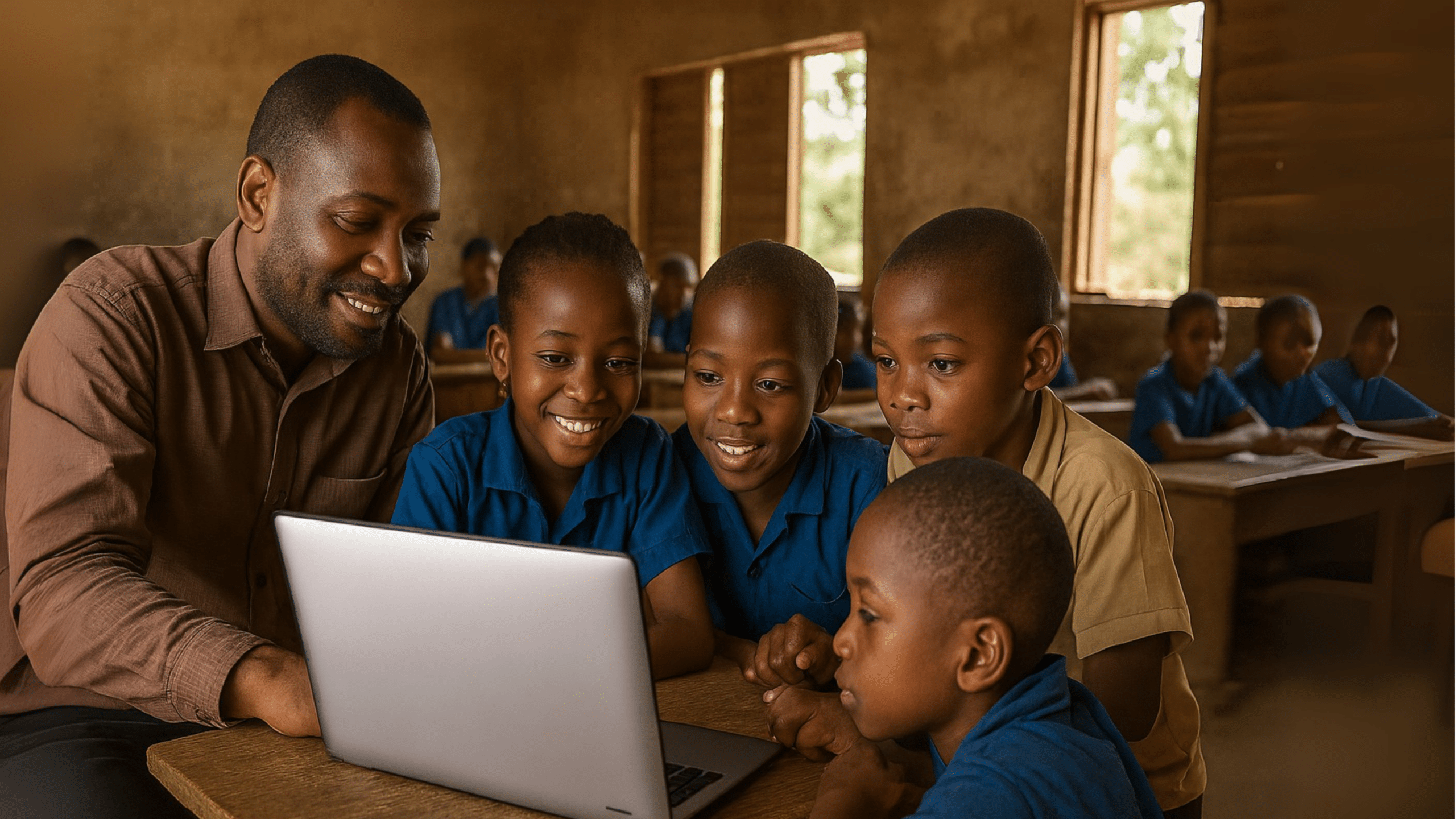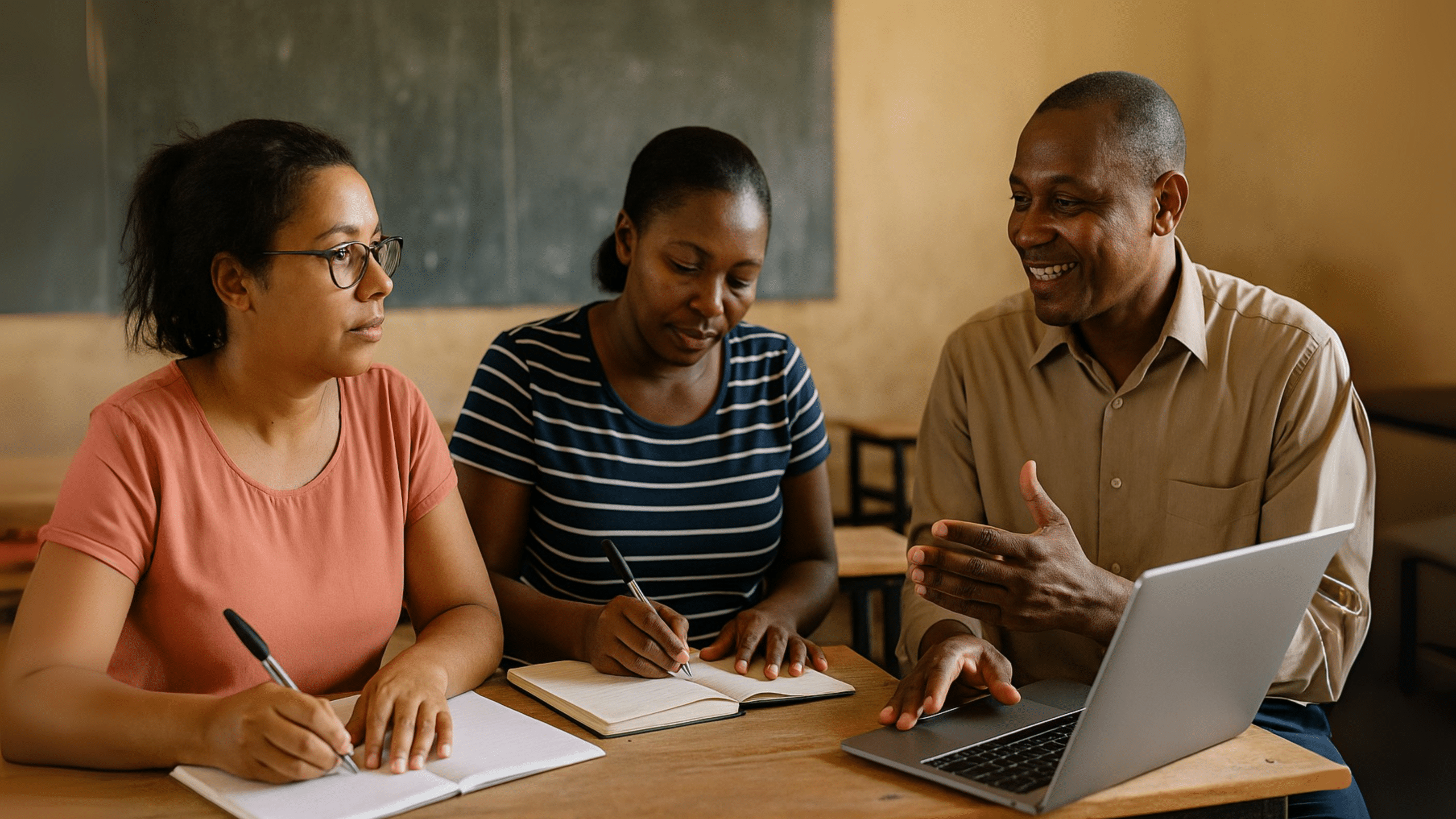Across the Global South, teachers are being asked to do more than ever, often with too little support. As countries race to recover from pandemic-related learning losses and address longstanding educational disparities, one solution is increasingly coming into focus: investing in effective, scalable Teacher Professional Development (TPD).
Between 2020 and 2024, the Global Partnership for Education Knowledge and Innovation Exchange (GPE KIX) launched an ambitious research initiative to reimagine what meaningful TPD looks like. By supporting 11 research projects across 41 countries, the program identified what works, what doesn’t, and—most importantly—how to bring transformative teacher development to scale, even in low-resource environments.
STEM Teacher/student Education for Primary Schools (STEPS) was one of the 11 research projects, designed to address the challenges of primary schooling in the Democratic Republic of the Congo, Benin, and Anglophone Cameroon. The broad research goal was to determine the impact of TPD, new pedagogy, and curriculum materials on the performance of primary school teachers and students in Math and Science in these countries.

The Problem: An Old Model for New Challenges
Despite growing awareness of the “learning crisis”—exacerbated by COVID-19—too many in-service teacher training programs remain outdated, short-term, and top-down. These models often fail to equip teachers with the tools they need to support today’s diverse learners.
The GPE KIX initiative called for a paradigm shift: student-centered learning must replace rote memorization, and teachers must be seen not just as implementers but as co-creators of innovation.
What Works: Five Key Features of Effective TPD
The synthesis of these global research projects surfaced five essential ingredients for successful TPD programs:
- Blend Content and Pedagogy
Teachers need to master core subjects and understand how to teach them effectively in real classrooms. - Use Active Adult Learning Strategies
Teachers, like their students, learn best through reflection, peer learning, and real-world application, not passive lectures. - Promote Peer Collaboration
Professional communities and team teaching foster ongoing growth, autonomy, and innovation. - Leverage Expert Facilitators
Skilled trainers who understand both pedagogy and classroom realities are key to effective implementation. - Provide Long-Term, Continuous Support
One-off workshops don’t change practice. Mentorship, coaching, and iterative learning cycles do.

Results That Matter: From Classrooms to Ministries
Across diverse contexts—from Bhutan to Nigeria to Nicaragua—the projects produced powerful results:
- Student-Centered Classrooms: In Honduras and Nicaragua, peer tutoring models shifted class dynamics to foster critical thinking, self-confidence, and independence.
- Gender-Responsive Teaching: In Afghanistan, Benin, and Cameroon, inclusive strategies helped teachers address equity gaps, integrating learners of different genders and abilities.
- School Leadership Engagement: In Côte d’Ivoire and Haiti, school principals became champions for pedagogical innovation and teacher-led change.
- Digital Inclusion in Remote Areas: In Chad and Ghana, technology platforms like Moodle and mobile-based learning brought training to tens of thousands of rural teachers.
- Policy-Level Integration: In Uzbekistan and Zambia, proven models like TPD@Scale informed new national strategies for in-service training.
Policy Recommendations: Scaling What Works
Based on these lessons, GPE KIX recommends five strategies for governments and stakeholders:
- Start with Students
TPD must address student learning outcomes and be rooted in formative assessments. - Prioritize Equity
Teachers in marginalized communities need tailored support to meet their learners’ needs. - Choose Proven, Cost-Effective Models
Peer mentoring, collaborative learning, and hybrid tech models have shown strong results. - Build Strategic Alliances
Collaboration with teachers’ colleges, ministries, unions, and tech partners can drive sustainable scale. - Commit to Continuous Evaluation
TPD programs should include ongoing monitoring and feedback loops to adapt and evolve.

The Takeaway: A New Vision for Teaching
The GPE KIX research makes one thing clear: when teachers are supported with effective, inclusive, and scalable professional development, entire education systems improve.
As global education stakeholders look to the future, this evidence offers a powerful roadmap: invest in teachers, not just with resources, but with trust, collaboration, and sustained learning opportunities. That is how we close the gap between education promise and education reality.
Read more about the STEPS Project here.
